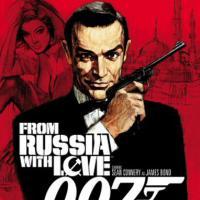
The Bond Gambit by GM Arun and GM Magesh
The king's gambit is a fascinating opening that has been in practice for more than four hundred years in chess history. If you try searching for King's gambit games in your database you will start seeing games starting from the early 16th century. During earlier times, before Steinitz introduced his Chess strategy and planning school of thought people always were under the impression that immediate action like going after the opponent's king or trying for initiative before developing all the pieces were very popular. Therefore, many gambits were considered as a strong choice for white. This gambit in particular has proven to be very dangerous for black as it is one of the most sharp variations in Chess. Personally, it gives me a nightmare to see my opponent play King's Gambit as a surprise. Though in the modern chess era this opening has been thoroughly analysed and established to be very safe for black, it can be dangerous if you have to think of variations over the board. If god forbid, you forget a few variations (it is bound to happen if you end up playing a particular variation once in ten years) you can be in major trouble for even relatively minor mistakes.
Given the sharpness of this opening it should not be surprising to know that some of the most brilliant and fascinating games in chess history have been produced right out of this gambit. Players like Morphy, Anderssen, Lasker, Spassky, Short and Morozevich have been trying out this opening at different times.
Today let us take a look at some of those brilliant games that will remain in chess history for ever and try to understand white's ideas behind his violent onslaught on the black king.
The first game we will look at today was not actually a tournament game. This game between Adolf Anderssen and Lionel Kieseritzky in the year 1851 was actually a friendly encounter between the two during a break in their actual match which was played in London. After the game was over, Kieseritzky was very impressed with it and sent the notation to his publisher which was published later on and referred to by many as the "Immortal Game". Garry Kasparov has annotated this game extensively in his book "My Great Predecessors" and interestingly Kasparov was forced to play this variation in a Theme match (The openings were decided before) against Short in 1993 which he ended up losing in just 15 moves. Interestingly the final moves of this game has been used in one of Ridley Scott's movies “Blade Runner”, here is the youtube link in case you are interested http://www.youtube.com/watch?v=wwmRfsGigwQ
The next game is again a beautiful display of attacking intuition by none other than the great Paul Morphy. He had a natural attacking instinct to himself that undeniably made him one of the best chess players during his time. Again keep in mind that these variations are not meant to be purely judged in terms of the accuracy, but a combination of the intuition and calculation.
Morphy's ideas have always been involved in activating all his pieces, he never really worried about losing material as he knew it is the number of pieces that are participating in the actual battle that matters, not the ones that are resting back home. Now let us fast forward about a hundred years and take a look at a another beauty from Boris Spassky.
Interestingly again, this game was portrayed as a match between two characters in the second Bond movie “From Russia with love”. You can watch the chess scene from this link http://www.youtube.com/watch?v=mZWDxnXJI-s . If you notice carefully you will see that the two white pawns on c5 and d4 are actually missing in the movie. Anyways we hope that these entertaining games have been a treat for you to study and next week we will come up with a response from black against the King's Gambit.
